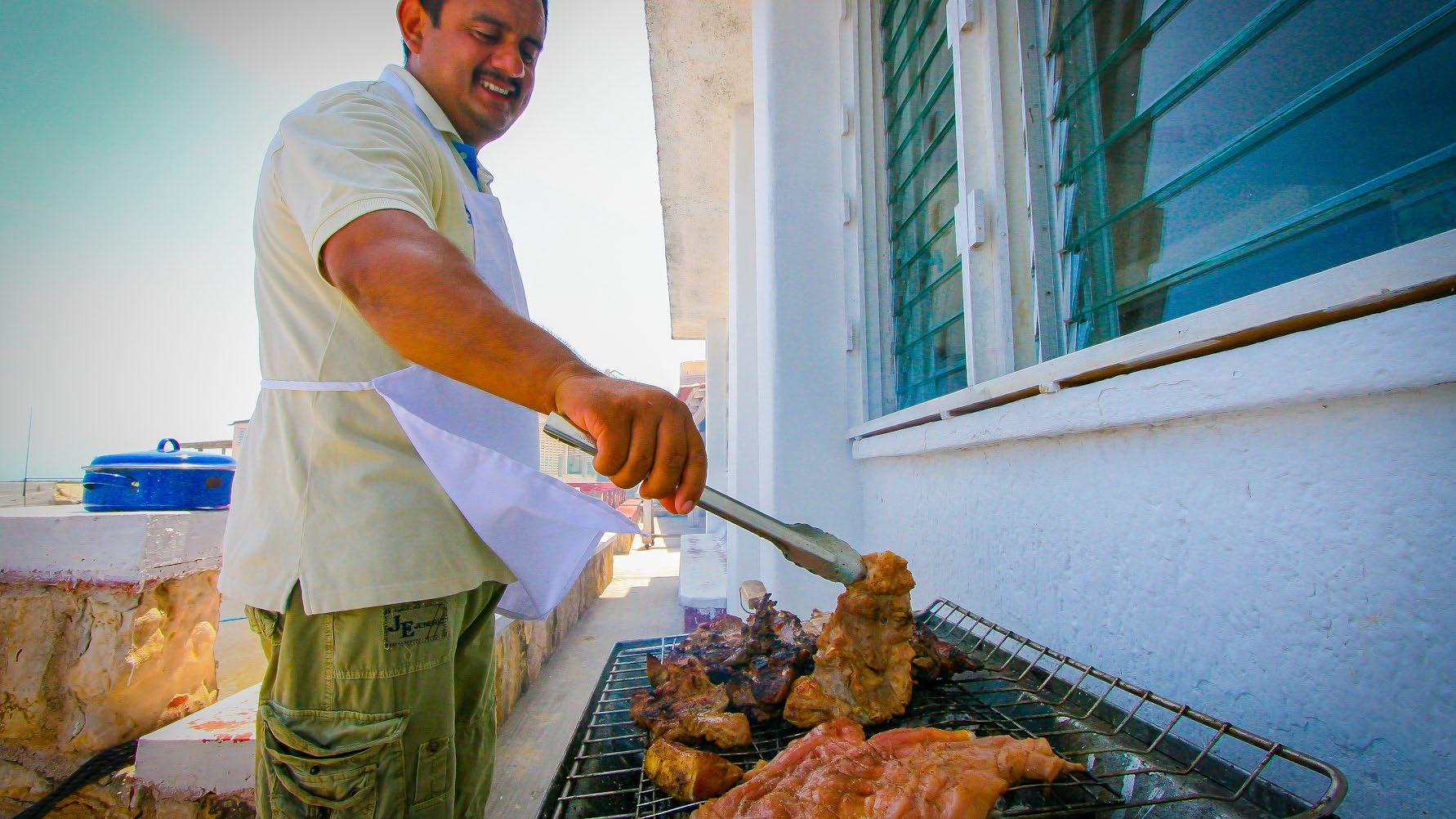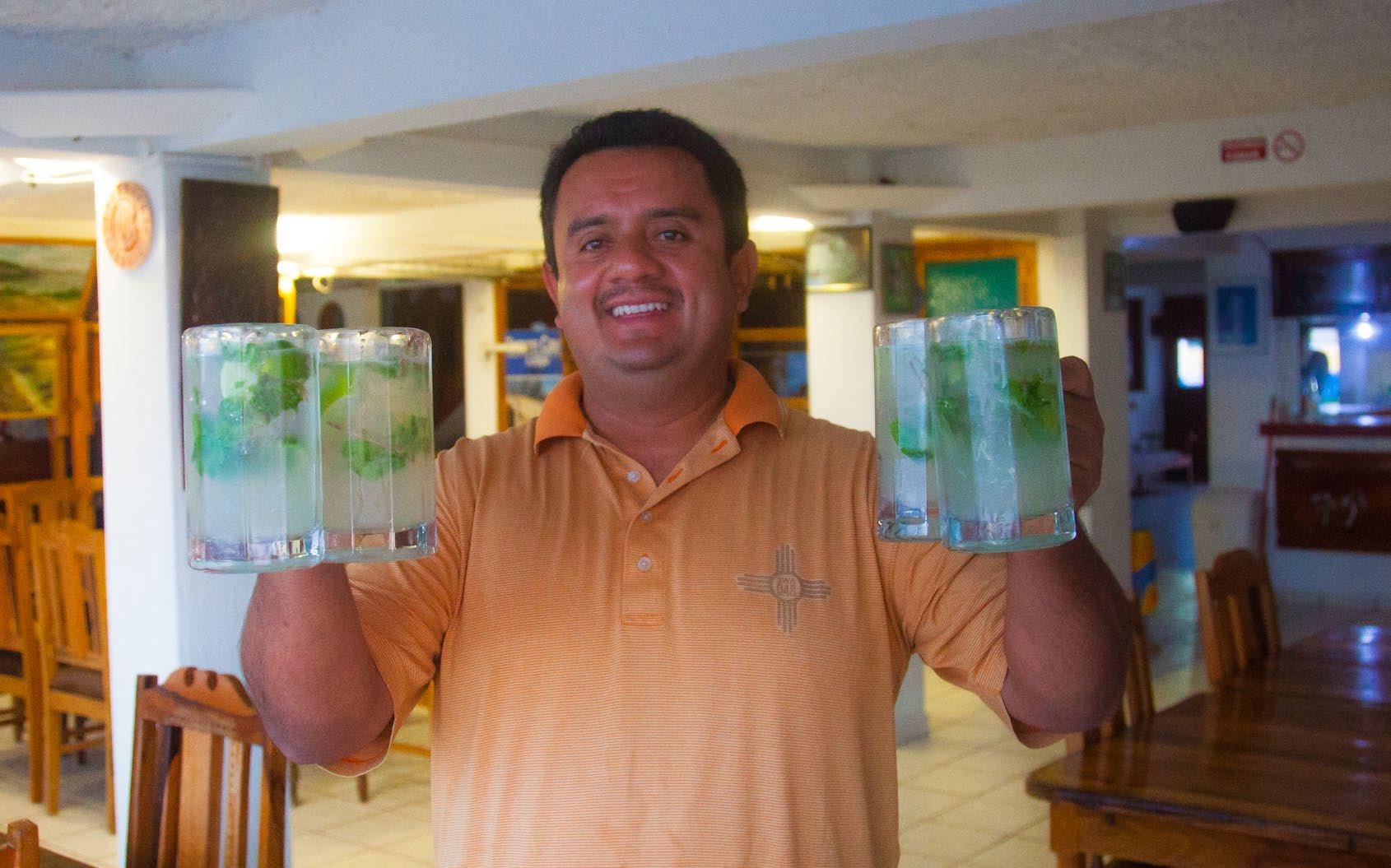
10 minute read
Baby Tarpon: Tarpon Cay Lodge’s “Loco Sabalitos”
Mother Nature needed a fish that jumped high, was adorned in stainless steel plates of armor, and attacked with reckless abandon. She needed a durable fish that induced shock and awe from all that encountered it, was capable of migrating thousands of miles and was comfortable in murky oxygen-depleted water. She needed an ambush predator with a bucket-sized mouth that could chase, strike and devour a prey item with a simple flick of its tail. She needed to create the fly angler’s dream quarry and a fish that had the potential to thrill, infuriate and addict anglers from near or far and so she created the tarpon. Mother Nature created perfection when she created the tarpon and luckily for us there is a place to experience them unlike any else on Earth.
BY DYLAN ROSE

Tarpon Cay Lodge
Tarpon Cay Lodge is the world’s premier destination for targeting juvenile tarpon on the fly. Located in San Felipe, Mexico on the Yucatan Peninsula, this charming and somewhat rustic hotel is home base for fly anglers keen on tossing flies to “loco sabalitos” (crazy baby tarpon!) in the 5lb – 25lb range. The expansive open water turtle grass flats and mangrove estuaries surrounding San Felipe are some of the most productive habitat found anywhere on Earth for rearing tarpon.
The lodge is located in the charming and essentially tourist free commercial fishing village of San Felipe on the northern tip of the Yucatan. It is positioned squarely between the expansive Parque Natural San Felipe marine preserve stretching some 20 miles to the west and the Rio Lagartos preserve stretching 30 miles to the east. Cumulatively, these conservation corridors ensure that miles upon miles of prime tarpon rearing grounds are protected in their entirety.
Tarpon Cay Lodge is actually a small hotel called the Hotel San Felipe. Rooms at the hotel are not over-thetop in terms of luxury but instead offer simple surroundings with clean, comfortable, and air-conditioned rooms and common areas. Rooms feature private bathrooms, ocean views and plenty of hot water. Added to the charm of Tarpon Cay is on-site manager Beto, who remains one of the most popular hosts we have ever come across. His pleasant and good-natured humor, attention to detail and unfailing desire to help you have a great time keeps anglers coming back year after year.
Prehistoric, Air Breathing, Sex-changing Hermaphrodites
Tarpon are fascinating and prehistoric creatures, capable of breathing air and changing sexes late in their life span. Yes, they may be strange, but we do not discriminate! Scientists continue to research and study all that they can in an attempt to understand these incredible fish. In as much as we know, the majority of baby tarpon grow and begin to mature in the estuarine eco-systems of the Gulf of Mexico where they take refuge in the vast mangrove lined coastlines of the Yucatan.

These babies develop in this environment for the first 7 years of their life, typically growing to an average size of about 35 pounds. At this point the relatively small fish are all males. As they continue to mature, grow in size and build confidence they begin seeking refuge and prey items offshore. Eventually these young males encounter other migrating adults in open water, where they in turn join with the migration and seek out mature females for mating. The main portion of the migration is thought to begin somewhere near Panama (or even further south) and extends north through Guatemala, Belize, Mexico and the Gulf of Mexico to the Florida Keys. As juveniles become adults, it’s thought that at somewhere around the 35 year-old mark, when averaging near 100lbs and they switch to become females. Females are thought to spawn in open water where their minute larvae eventually are washed back towards the mangroves where the cycle repeats.

The Fishery
The fishing program at Tarpon Cay allows two anglers to fish per boat with a single guide. The guide team is a seasoned crew of experienced tarpon hunters, deeply familiar with their local waters. All of them were born and raised right in San Felipe. They are a highly skilled and savvy team with expert knowledge of the area and the specific needs of fly fishing clientele. Tarpon Cay is a small operation that only places three boats on the water each day, keeping the fishery fresh and unpressured all season long. Anglers are able to fish the entire expanse of available terrain without worry of other operations infringing on their fishing zone, which is a huge benefit and rare in the scope of available saltwater fishing destinations.
Anglers are typically outfitted with fast action 8 and 9 weight rods, high-quality saltwater reels and floating fly lines. The black golden hue of a tarpon’s back blends perfectly with the color of the bottom in this area making it nearly impossible to see them through the water. The guides are instrumental at reading the surface of the water for telltale signs of fish moving underneath. At times schools of moving fish from a half dozen to more than 200 can be spotted.



At other times you may cast to a single rolling fish, only to find that you spooked a school of 40 fish ten feet from the boat. Sometimes blind casts or exploratory casts are made in likely areas to find fish, especially if they do not seem to be rolling. Depending on the tides fish can be found cruising open water flats or at the mouths of dozens of mangrove lined creeks that drain the area. Tarpon Cay’s 18ft pangas are specifically designed with fly fishing in mind and are extremely stable fishing platforms. Smaller size 2 - 2/0 tarpon flies, in natural colors that are designed to imitate baitfish or shrimp work best. Fishing surface and waking patterns can be incredibly exciting and addicting while other times a subsurface baitfish imitation might do the trick. Neutrally buoyant fly patterns tied with spun deer hair or bits of foam smoothly glide over the vegetation without hanging up and a whether you’re fishing on top or below the surface a well positioned cast to feeding fish almost always draws attention.
Few things will make you happier as a traveling angler then the split shift fishing program at Tarpon Cay Lodge. Each morning the fishing day begins around 6am and extends to about 11am. After the morning session, anglers have an opportunity take in a fabulous home-cooked Mexican lunch back at the lodge, have a siesta, tie flies and prep tackle for the evening session which kicks off by about 3pm. Anglers have the opportunity to fish through the evening sunset and typically arrive back at the lodge around 7PM for cocktails and dinner.
It’s easy for anglers to assume that because they are targeting “babies” the catching will be easy. Sometimes, this is absolutely the truth, but more realistically juvenile tarpon can be very challenging. Even though they may be smaller then their adult migrating counterparts they are still tarpon, and at times can become very sensitive to their changing environment. Whether it’s due to increased rain, the moon, wind, a changing barometer, or other unknown factors the fish can at times become quite finicky. At other times a well presented fly falling anywhere within a 30 foot radius will be greedily inhaled and instantly attacked. Every day and every trip is different with tarpon, further adding to the joy of targeting these fish.

The Launch Factor
Excellent fly casters will excel in this fishery, and owner Marco Ruz is fond of letting those anglers keen on visiting the lodge know that this is a “casters game”. The better your accuracy, speed and distance, the better your chances are of hooking multitudes of fish. It’s more a factor of how fast one can deliver the fly then it is extreme distance. An angler that can reach 70 feet in three or less false casts with a powerful double-haul will have the best access to traveling fish cruising the flats. Tarpon are highly sensitive, so at times the guides will attempt to keep the boat quiet by keeping their distance from the fish. This means that the angler may be asked to reach great lengths quickly and thus good casters will be rewarded with higher catch rates.
Tarpon have brutally hard mouths and can repel even the highest quality and sharpest hooks with amazing proficiency. Often, anglers need to remain patient as they learn the insand-outs of properly strip striking on a thrashing 20lb tarpon. There is a sharp learning curve that comes with developing the skill on how to set the hook and it can take a couple of days of missed opportunities to get the hang of it. “Bowing the king”, or the “prince” in this case, is the practice of giving line to a jumping and thrashing fish in an effort to avoid the leader being cut by the tarpon’s sharp mouth and gill plates. Patience to get it right is required!



When To Go?
Baby tarpon are available at Tarpon Cay year-round; however, late spring through summer offers the best opportunity for stable weather, lighter winds and the most consistent action. As the mercury rises and calm winds settle in by late May, the season kicks in to high gear. Throughout the summer warm regular rainfall keeps winds calm and the tarpon actively feed. As the temperatures rise, and oxygen content on the flats goes down, the tarpon stay comfortable by rolling and breathing air, which gives us great chances to spot them, particularly in the cooler morning and evening hours.
As fall approaches, opportunities for larger migratory fish can sometimes yield truly out-of-this-world tarpon angling. Long runs from the lodge to the migratory fishing grounds are possible in late August and September for those interested in trying to find migrating fish of a 100lbs or larger. Finding targetable numbers of migrating adults is always a bit of crapshoot, but it’s certainly nice to have the option during the fall months and all it takes is one fish to have a truly memorable encounter. As the winter months settle in, chances increase for cold weather from the North, which can greatly inhibit fishing and so the season typically winds down with the arrival of October.

The Final Bow
The northern Yucatan’s beauty will steal your breath away and the bountiful opportunities to chase the Silver Prince at Tarpon Cay are a fly anglers dream. The casual atmosphere, friendly staff, great local food, skilled guides and an insanely productive tarpon fishery make Tarpon Cay Lodge our favorite spot in the world to chase baby tarpon. The entire tarpon life cycle can be encountered in a single trip to San Felipe. From 6-inch babies hiding in the mangrove roots to full-fledged 100lb migrating adults (in season). This fact alone makes Tarpon Cay unique in the landscape of the world’s tarpon destinations. Coupled with fantastic guides, one of the best on-site hosts we’ve ever seen and the heart pounding thrill of a leaping tarpon on the end of your line and it’s impossible to see how a trip to Tarpon Cay shouldn’t be the very next destination on your saltwater hit list.







